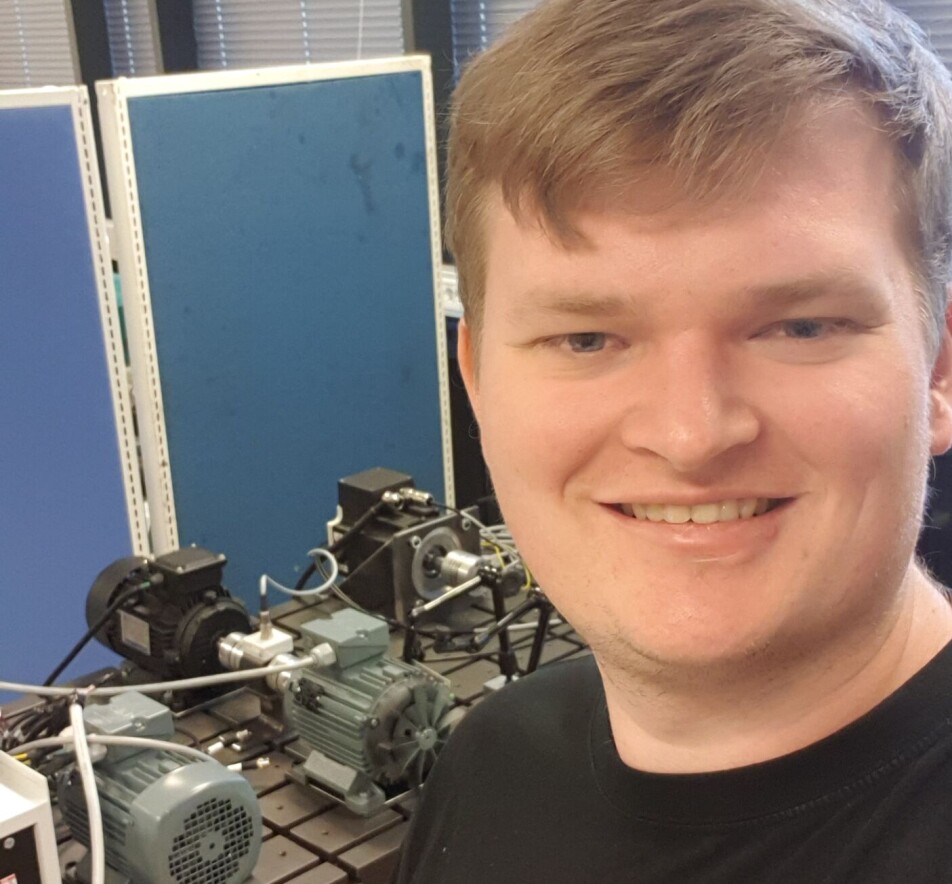THIS ARTICLE/PRESS RELEASE IS PAID FOR AND PRESENTED BY THE University of Agder - read more

Artificial intelligence can detect faults in electric motors more quickly
This method can make monitoring of wind turbines and electric cars more efficient, which could pay off for electricity customers and car owners.
“Effective monitoring and fault diagnosis of the electrical machines in wind turbines and electric vehicles could make their operation more affordable, and contribute to making operation and maintenance safer,” Sveinung Attestog says.
He works as a trainee at Agder Energi. He recently obtained his doctorate from the University of Agder (UiA). His thesis is about troubleshooting electric motors at varying speeds and loads.
Modelling and fault diagnosis using artificial intelligence are keywords in his thesis. But the research is also practically grounded. The mathematical models were tested in the lab at UiA.
Electrical machines - such as motors or generators - play a key role in electric vehicles, wind turbines and many other products.
“I have looked at how to efficiently troubleshoot electric motors and generators that convert between mechanical and electrical energy, such as electric vehicles and wind turbines,” Attestog says.
The motor he studied is popular because it takes up relatively little space, but still has high efficiency and high torque. In technical terms, it is called permanent magnet synchronous motor (PMSM).

More effective monitoring
Today, monitoring and inspections are largely scheduled according to the calendar. Equipment is checked when it is assumed that it needs maintenance or replacement. Cars are checked every two years, for example, and wind turbines every year.
But now, researchers such as Attestog are pushing to find solutions that are independent of the calendar, that can quickly detect wear and tear and remediate problems to avoid accidents.
“The sooner we detect errors, the easier they are to deal with. It is important for both drivers and electricity consumers that the engine of an electric car and the generator of a wind turbine perform optimally,” Attestog says.
It is also in the interest of car dealers and electricity companies that the machinery in cars and wind turbines works at its best.
Short circuits, wear and tear
Faults in the motor are usually caused by incorrect use or wear and tear. Short circuits are frequent faults.
“Monitoring and effective fault diagnosis schemes are necessary for detecting faults early. That will ensure safe operations, speed up the maintenance of the equipment and reduce downtime and cost,” Attestog says.
Maintenance
All machines must be serviced at regular intervals, especially equipment that is in regular use and equipment that is constantly exposed to harsh weather conditions.
Offshore wind turbines, for example, are exposed to harsh weather and salt water. Electric cars drive on salted winter roads which cause corrosion to the vehicles.
A motor is also subject to stress and wear depending on the speed and power it operates at.
Faster solutions
These are among the most important contributions from Attestog’s thesis:
- Developed and tested two solutions that find motor faults faster than before.
- Developed and tested a new artificial intelligence method to search for faults regardless of speed and stress on the motor.
- Simplified motor monitoring by using less equipment, reducing the number of sensors from 12 to 2.
“The advantage of artificial intelligence is that we can detect faults without having to know the details of motor power and performance,” the researcher says.
Artificial intelligence solves problems
Synonyms for artificial intelligence in this context are machine learning and reinforcement learning.
When calculating how a motor should work, the researcher starts with more data of the motor operating without faults than with faults. But artificial intelligence solves this problem, which researchers call imbalanced datasets.
“To put it simply, I coded it so that artificial intelligence is rewarded for detecting faults. This is why artificial intelligence places emphasis on faults, and learns to detect them,” Attestog says.
Reference:
Sveinung Attestog. Modelling and Detecting Faults of Permanent Magnet Synchronous Motors in Dynamic Operations, Doctoral dissertation, University of Agder, 2022.

This article/press release is paid for and presented by the University of Agder
This content is created by the University of Agder's communication staff, who use this platform to communicate science and share results from research with the public. The University of Agder is one of more than 80 owners of ScienceNorway.no. Read more here.
See more content from the University of Agder:
-
This researcher has helped more economics students pass their maths exams
-
There are many cases of fathers and sons both reaching elite level in football. Why is that?
-
How we used plants to protect ourselves from evil
-
What is it like for nurses to promote health behind bars?
-
This can make life easier for new maths teachers
-
Norwegian women were burned at the stake here




































